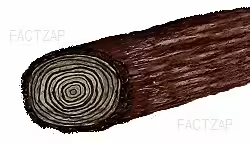How archaeological discoveries are dated accurately
Miyake events are cosmic events when particles from the Sun blast towards Earth, causing destruction and high temperatures. We have not seen a Miyake event in the recent past. Carbon rings in old trees have proof of hostoric Miyake events.

Miyake events are powerful bursts of high-energy protons from the Sun. In recent times, solar flares are a common occurence. Strong solar flares disrupt satellite and wireless signals on Earth. They impact electricity grids too. Miyake events are stronger and have a bigger impact on Earth.
Discovery of Miyake Events
Miyake events were first discovered by Fusas Miyake, a cosmic ray physicist in Japan.
She saw an increase in isotopes of Carbon (C-14), Beryllium (Be-10), Chlorine (Cl-36) in old Japanese Cedar trees. Such chemicals come from space. So, it was first thought to be a supernova event that
sent cosmic rays towards Earth. But later studies show many old trees around the world have carbon rings associated with such cosmic events. Dates recorded by scientists point to Miyake events
6 times in the past from 7176 BCE to 994 CE.
Carbon Dating
Carbon-14 is radioactive carbon found in the atmosphere. Living plants absorb carbon dioxide. Along with carbon dioxide they also
take in carbon 14, which is radioactive and decays constantly. As carbon 14 is absorbed from the atmosphere, it makes up for the amount lost by radioactive decay.
After a tree is cut, C-14 in it continues to decay. No absorption from the atmosphere. Amount of Carbon 14 leftover in old wood is used to calculate when the tree was cut down.
Carbon dating is the process by which scientists find the amount of C-14 remaining in a piece of wood. It is used to calculate the approximate period when a tree was cut down.
Archaeological Discovery
For dating historical ruins , archaeologists use wood pieces from the site. C-14 levels are measured.
A spike in C14 levels means the tree lived during a Miyake event. C14 levels are compared with documentations of known Miyake events.
Every Miyake event has a different C-14 level. It is found by matching discoveries in many parts of the world. Comparing C-14 levels shows which Miyake event happened before the tree was cut down. Counting rings after it gives the exact year when that tree was cut down.
This method is an advancement in archaeology dating as it gives accurate datings of archaeological finds.
This method was used recently to study wooden objects recovered from a Viking settlement in Newfoundland. It proved Vikings reached North America much before Columnbus did, close to a Miyake event in 992 CE.
A group of scientists stumbled upon a buried forest in the French Alps. They found a spike in radioactive carbon corresponding to tree rings dated 14,300 years ago. Studies of another radio active compound, Beryllium 10, in Greenland's ice cores show
a similar spike corresponding to 14,300 years ago. Both findings point to a huge cosmic storm, a Miyake event, 14,300 years ago.
Future Miyake Events
Trees and ice sheets remain the only proof of historical cosmic storms. During the ice age, Miyake events did not cause wide spread destruction. But advanced technology today is sensitive to cosmic storms. Satellites, antennas, telescopes, astronomical instruments, wireless communication, electricity grids, space station and space crafts, etc will be severely impacted if Miyake events happen today.
